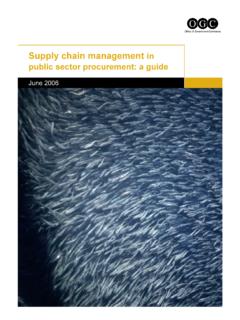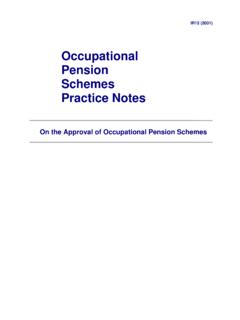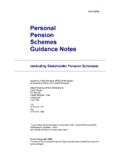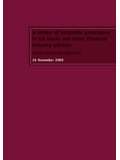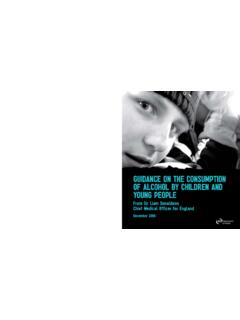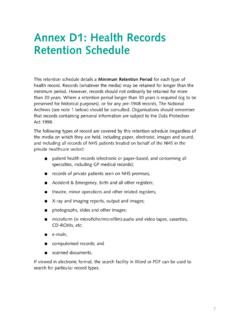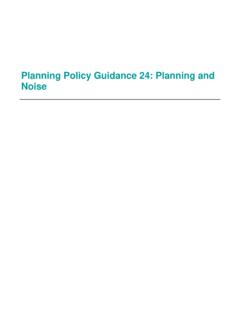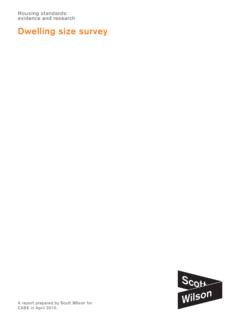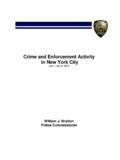Transcription of Crime Statistics: An independent review
1 Crime Statistics: An independentreviewCarried out for the Secretary of State for the Home DepartmentNovember 2006 Dear Home Secretary,I attach the review of Crime statistics commissioned by your predecessor,Charles review Group has brought together distinguished individuals differing widelyin their ranges of expertise and interests relating to Crime statistics and theirpersonal positioning on the political spectrum. After considerable debate, wepresent to you a series of practical recommendations that we have all agreed onas a basis for immediate and significant changes to and enhancements of ourcurrent production, communication and use of Crime statistics that will do muchto restore public trust and hope you find our report helpful to you in the tasks you face in the sincerely,Professor Adrian Smith, FRSiThe Home Secretary is concerned that public trust in the Crime statistics produced by the Home Office has declined tosuch an extent that it is no longer possible to have a debate about alternative criminal justice policies on the basis ofagreed facts about the trends in Crime .
2 He wishes to be advised on what changes could be made to the production andrelease of Crime statistics so that public trust is addition, he wants the review Group to examine the key issues raised by the statistics Commission about crimestatistics and to make practical recommendations to the Home Secretary as to what changes are needed to addressthose issues. These recommendations will need to take account of the changes to strengthen the system of officialstatistics announced by the Chancellor in November, on which further detail will be published Terms of Reference for theReview of Crime StatisticsiiLetter from the Chair of the review to the Home SecretaryThe Terms of Reference for the review of Crime StatisticsiExecutive SummaryiiiChapter 1:Background to the Review1 Chapter 2:National Crime Statistics7 Chapter 3:Local Crime Information19 Chapter 4:Governance, Management and Communication proposals to help restore Trust and Confidence in Crime Statistics25 Appendix 1.
3 Membership of the review Group29 ContentsThe review Group has addressed the Home Secretary s request to make recommendations on changes thatshould be made to the production and release of Crime statistics in order to restore public review Group has taken into account that public trust in Crime statistics can be undermined by any or allof the following: presentations of statistics that are perceived to be in conflict with or of no relevance to thedirect individual experiences of members of the public; presentations of statistics using categories or definitionsthat do not accord with public commonsense interpretations; presentation of conflicting statistics apparentlyopen to widely differing interpretations; lack of coverage of significant areas of criminal activity and victims;perceived potential for police or ministerial interference in the production and presentation of the our report, we present detailed analyses of these issues and a series of detailed recommendations aimed ataddressing them.
4 We believe all the recommendations will contribute positively to restoring public trust incrime statistics . However, we place considerable emphasis on the recommendations in Chapter 3. Our mainconclusions can be summarised in the following broad shift in emphasis is required in the production and communication of Crime must shift from the publication, by the Home Office, of the aggregate national picture to asystem of communication which encompasses local data at local level between police and theirneighbourhood the scope and definitions of the national statistics that are produced need a radical over-haul. Significant groups of victims are not covered by current surveys and certain major currentcrime category definitions are confusing and , management and organisation of the police and Home Office environments inwhich Crime statistics are produced and reported must be revised to provide the public withcomplete assurance of actual and perceived independence and integrity of the SummaryivCrime statistics have a long history, based on court and police records and,since the 1980s, on a victim statistics about Crime in England and Wales have been collected and published by the HomeOffice since 1805.
5 Initially, these only included court-based data about proceedings and 1857, data about crimes reported to and recorded by the police were added, the latter providingthe means by which the government was able to exercise oversight over what was then a highlylocalised policing structure accountable at the local political this long history of reported and recorded Crime statistics being used to judge policeperformance, such statistics have long been recognised as having a number of weaknesses. First, therehave been regular claims that the police adjust their Crime statistics to improve measured reportedperformance. Second, the processes and categories used by local police to record Crime havehistorically had a significant degree of local variability; this has made it difficult both to makecomparisons among local forces and to form aggregates to provide a meaningful national ,the picture that emerges from recorded Crime is potentially distorted by the unknown anduncontrollable variability in the public s reporting of Crime to the police.
6 A number of attempts havebeen made over the years to address these perceived problems but they largely the late 1960s, American criminologists began experimenting with the alternative approach of usinglarge-scale population surveys to measure the extent of Crime by recording the experiences of victimsof approach has the advantage of being free of the potential distortions of both the variabilityin police recording procedures and in the vagaries of public reporting of Crime to the 1981, this approach was sufficiently well established for the Home Office to set up its own version,the British Crime Survey (BCS)1. The BCS soon became established as an alternative source of crimestatistics2, complementing those derived from police recording of reported statistics became politically more sensitive when governmentsundertook to reduce the late 1960s, and for most of the remainder of the 20th century, Crime in England and Walesrose, as it did in most developed countries.
7 From a political point of view, the trend became soestablished that the main political parties tended to assume that their function was to manage theseincreases rather than to challenge them. However, in 1993, the then Home Secretary, Michael Howard,set about challenging the assumption that such rises were outside the control of 1:Background to the Review1. See: < > (30 Oct 06).2. The BCS is limited to measuring crimes against households and individuals. The Home Office has also used additional victim surveys to explorecrime against industry and Home Secretary since has also accepted that a major purpose of Home Office policy is to reducecrime and for the present government this has meant setting performance targets for Crime a result, Crime statistics have become a key metric for judging the performance of the Home Officeand therefore central to debates between government and opposition.
8 This has meant that crimestatistics have been subject to a quite new degree of scrutiny and their release and handling havebecome politically much more trend in Crime increased at a particularly steep rate between the 1970s and mid 1990s, but thenbegan a long and steep governments since 1997 have pinned their credibility to their performance targets and thecrime statistics appeared to point to success in Crime reduction. However, it was understandable thatthe early indications of falling Crime would be greeted with some scepticism after such a long period ofrising Crime . Moreover, by the time the evidence became clear that the falls in Crime were not simplyshort-term variations in the trend, the media climate had shifted from the honeymoon period thatfollowed Labour s first , at just this point the effects of introducing the new National Crime Recording Standard(NCRS)3meant that police recorded Crime was not showing the same trend as the BCS.
9 Whilehistorically the BCS and the police recorded Crime series had mainly shown similar trends, they showedsharply divergent trends from 2002 until around 2004. The BCS showed the fall in Crime continuing,whereas police recorded Crime showed Crime going up again (see Figure 1).Figure 1: Indexed trends in police recorded and BCS Crime , 1981 to 2005/062050100150200250300350 All BCSR ecorded (not NCRS adjusted)2005/062004/052003/042002/03200 1/02199919971995199319911987198319812001 /02 to 2003/04 show a more marked increase in recorded Crime due to the introduction of the (1981 = 100)3. See: < > (30 Oct 06).Technical changes to the statistics have been confusing and a reduction intotal Crime has been greeted with the present government came to power in 1997, the Home Office was publishing policerecorded Crime statistics annually and the British Crime Survey results separately HomeOffice had also carried out a one-off survey of commercial and industrial 1998, new counting rules for Crime were introduced which extended the list of so-called notifiable offences that is, those offences that police forces must report to the Home Office for inclusion in the national crimestatistics.
10 The new rules were introduced because the Home Office wanted the Crime statistics to reflectmore directly the experience of victims and to ensure that police forces could not avoid reporting notifiableoffences by downgrading them into the non-notifiable category. However, one of the consequences of thechanges was to increase the number of crimes recorded in the national Crime order to be able to quantify the effect of these rule changes, for one year only the Home Office putin place a double counting procedure using both the old and the new a result, the effects of thechange in the counting rules were clearly understood by commentators and key opinion formers and thestep change in the Crime series was accepted with little adverse criticism. However, some consequencesof this change were later to generate problems as criticism of Home Office Crime statistics 1999, the Home Office s Director of Research & statistics set up a review of Crime statistics .
